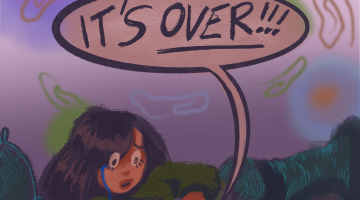Slavery is illegal in every country in the world, yet there are more victims of slavery today than ever before. The Global Slavery Index is a report published in 2014 that sought to discover how many people are living in modern slavery, what governments are doing to fix the problem and who is most vulnerable to forced labor. The GSI found that there are an estimated 36 million people living in modern slavery worldwide, very few governments have comprehensive programs for victims of slavery and only three out of 167 countries studied are actively addressing modern slavery in the supply chains of businesses operating in their countries.
Since slavery is illegal, forced labor businesses rely on crime and corruption. The International Labour Organization estimates that forced labor generates $150 billion in illicit profits per year.
These profits don’t just benefit individual criminals. Slavery wouldn’t survive without support from governments and corrupt politicians. The ILO reports that roughly 10 percent of victims are exploited by the state or rebel groups.
Almost every government in the world has committed to eliminating modern slavery, but it remains a profitable venture in business sectors like agriculture, entertainment, manufacturing and domestic work.
“From the Thai fisherman trawling fishmeal, to the Congolese boy mining diamonds, from the Uzbek child picking cotton, to the Indian girl stitching footballs, from the women who sew dresses, to the cocoa pod pickers, their forced labour is what we consume,” the Global Slavery Index says. “Modern slavery is big business.”
Modern slavery is not prevalent in the United States because we are a stable country with strong anti-slavery policies, but countries like India, China, Pakistan, Uzbekistan, Russia, Nigeria, the Democratic Republic of the Congo, Indonesia, Bangladesh and Thailand don’t have the same stability and/or anti-slavery policies. According to the GSI, these 10 countries account for 71 percent of people living in modern slavery.
The GSI analyzed vulnerability of people to modern slavery based on five dimensions, including state policy on modern slavery, human rights, human development, state stability and levels of discrimination.
“The findings illustrate a strong link between the stability or instability of a country and the vulnerability of its population to modern slavery,” says the GSI report. “Antislavery policies will have little impact when a country’s rule of law has broken down because of civil war, or ethnic or religious conflict.”
I’m writing this from my cozy apartment in a decent neighborhood in the freest country in the world. I have no real concept of modern slavery because I have never seen it. But thanks to the Internet and studies like the GSI, I know it’s out there and happening right now.
I never think about my plastic water bottles after I throw them in the garbage because I never see them again. Thirty-six million people are treated like garbage in the form of human trafficking or forced labor, and most of the Western world remains unaware or uninterested. In the same way that most Europeans weren’t concerned with the Atlantic Slave Trade, most Americans aren’t concerned with modern slavery because it’s happening far away and out of sight.
Just because you can’t see it or aren’t affected by it doesn’t mean it’s not happening.
According to the GSI, government action is the most important factor in eliminating modern slavery. While I can’t write public policy in Uzbekistan, I do have a voice in this country, one of the most powerful in the world. It’s our government that has a responsibility to do something about human rights violations in other countries.
Ryan Suppe studies philosophy. He can be reached at alexandraschultz@unr.edu and on Twitter @salsuppe.










